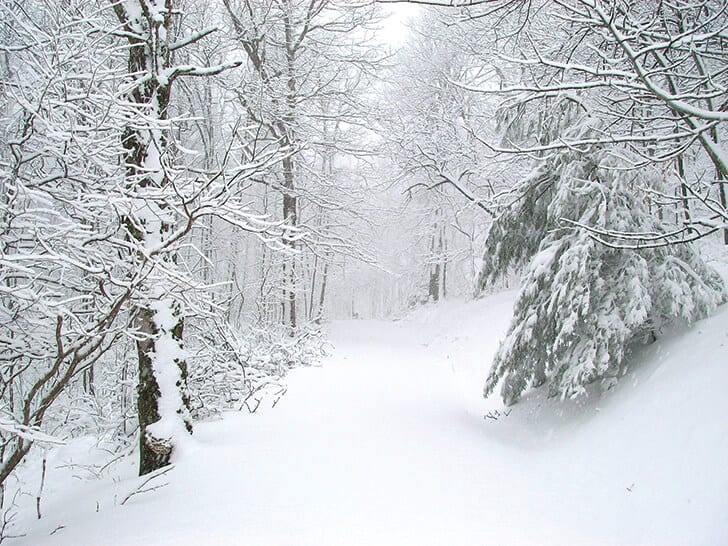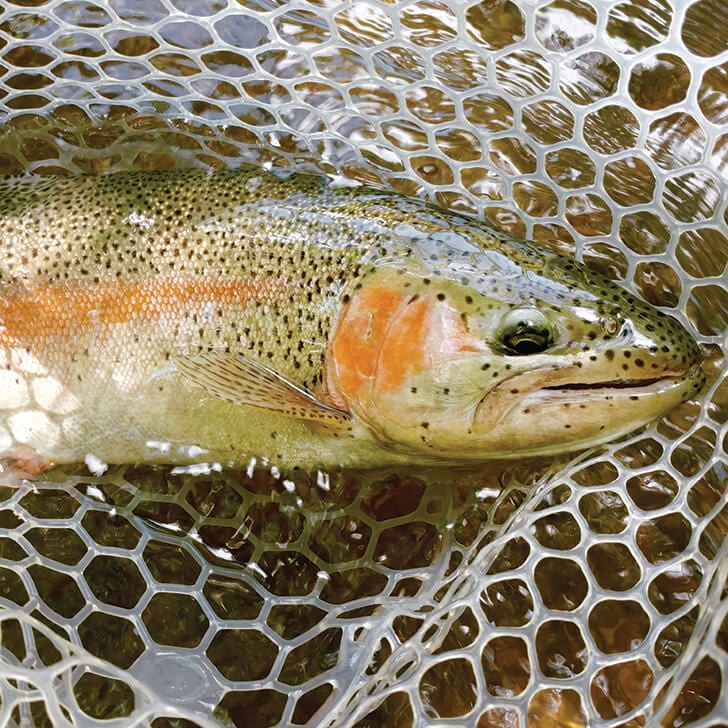By James Bradley:
It gets cold in the places that trout live. Winter changes our approach to fishing for them.
We cannot be careless about the clothing we wear, and there should be some safety planning in place before a trip for some frigid wintertime trout. As we continue into December, our air and water temperatures will continue to decrease. Here are a few things to keep on your radar: clothing, safety, delayed harvest waters, and persistence.
Clothing
There is nothing more miserable than wading during the wintertime in cold water if you do not outfit properly. This might not be a complete list of things to do or wear, but below are some steps to take to help you stay warmer and out longer.
A lot of heat is lost through the top of your head. If you are a cap wearer, go to a solid cap instead of the mesh style. A toboggan or beanie hat is another good way to prevent heat from escaping, and you’ll be able to keep those ears covered. Some prefer a solid cap with a fleece headband to keep those ears warm.
Use a good set of thermals as the base layer. The mid layer or outer layer should be fleece or wool. Make sure your bottoms have stirrups or closures around the ankles. They will prevent the legs from riding up. Use a rain jacket as your outer garment. Most rain jackets are lightweight, breathable and thin, so they are convenient and not bulky. They help trap heat and create a wind barrier, which is a plus on a cold windy day.
The feet can be hard to keep warm. First, do not base layer with or use cotton socks at all. Sweaty feet get cold first and will stay cold if you use cotton. A thin pair of wicking socks helps draw the sweat away from your feet. Follow with a second pair of socks made from merino wool. One other way to prevent cold feet is not to stand still in the water. Keep moving.
Your hands can also be hard to keep warm. Keep a pair of Hot Hands in a pocket so you can put your hands on them to warm. Half-fingered wool gloves should help keep those hands comfortable. If you keep getting your hook in the material, go barbless. Be sure to carry a small hand towel with you to dry your hands after getting them wet.
Bring your wading gear inside to be at room temperature prior to your trip, and put your wading gear on before leaving your home. Dressing up with wading gear at streamside is a sure way to lose much of your body’s heat. Do not leave your wading gear outside in the elements prior to your trip, especially if it is wet. Frozen waders and boots are not comfortable.
Safety
Safety is an important issue in winter. You can take your vehicle to most auto parts stores and have your battery tested for free. A battery being cold loses some of its amps for cranking. No one wants to walk out for help after a cold day on the water. Be sure to change the batteries in your flashlight. Keep a lighter or waterproof matches with you. And always tell someone where you are going and when you’ll be back.
Delayed Harvest
Delayed harvest stretches have been very good on some of the streams we have been fishing. Keep in mind that these streams are full of fish, but they get hammered sometimes, and the trout get smart pretty fast. If you find yourself not getting any takes, change flies.
With higher water levels, use weight to get those flies down to the bottom. Most of these fish have been well educated since the start of the DH season. Those reaction strikes to junk will slow way down. Switch over and begin using flies that mimic the naturals. These are the ones that trout survive on anyway. Stoneflies, Prince Nymph, Pheasant Tail and Hare’s Ear are the common patterns that represent what the trout see and eat in nature. Common sizes to have are 12 to 18, and have them with and without bead heads.
Persistance
Be persistent in your fishing method. Slow down while fishing and cover the water. You cheat yourself when just casting blind. Be thorough in covering the water. Look at the stream and divide it up into lanes as you look across it. Lanes should be a foot or less apart. Trout will be more selective and will not chase food or flies in cold water. Make casts into each lane, and allow your presentation to remain in that lane for the entire drift. Use smaller flies if you are not getting any takes.
Remember, the least current is on the very bottom of the stream, and this is where the fish are. Use weight and long leaders if needed to get those flies down to the fish.
Reel ‘Em In Guide Service is the only Orvis Endorsed Fly Fishing Guide in North Georgia’s Historic High-Country. They have been offering their services to fly anglers since 2001. They have permits for guiding in North Georgia and North Carolina, offer over seven miles of private trophy waters and operate float trips on the Toccoa River in Georgia and the Tuckasegee River in North Carolina.


